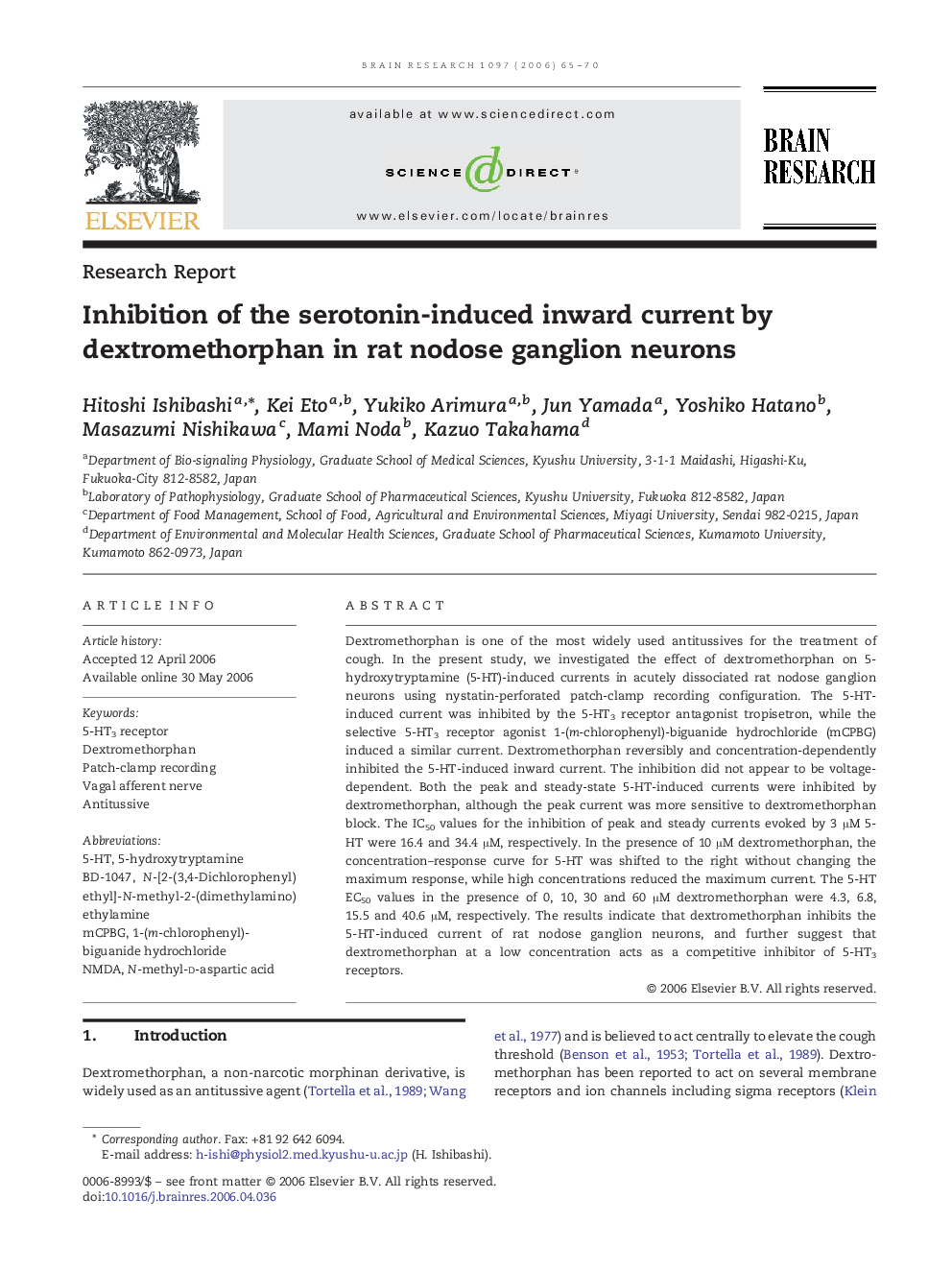| Article ID | Journal | Published Year | Pages | File Type |
|---|---|---|---|---|
| 4332589 | Brain Research | 2006 | 6 Pages |
Abstract
Dextromethorphan is one of the most widely used antitussives for the treatment of cough. In the present study, we investigated the effect of dextromethorphan on 5-hydroxytryptamine (5-HT)-induced currents in acutely dissociated rat nodose ganglion neurons using nystatin-perforated patch-clamp recording configuration. The 5-HT-induced current was inhibited by the 5-HT3 receptor antagonist tropisetron, while the selective 5-HT3 receptor agonist 1-(m-chlorophenyl)-biguanide hydrochloride (mCPBG) induced a similar current. Dextromethorphan reversibly and concentration-dependently inhibited the 5-HT-induced inward current. The inhibition did not appear to be voltage-dependent. Both the peak and steady-state 5-HT-induced currents were inhibited by dextromethorphan, although the peak current was more sensitive to dextromethorphan block. The IC50 values for the inhibition of peak and steady currents evoked by 3 μM 5-HT were 16.4 and 34.4 μM, respectively. In the presence of 10 μM dextromethorphan, the concentration-response curve for 5-HT was shifted to the right without changing the maximum response, while high concentrations reduced the maximum current. The 5-HT EC50 values in the presence of 0, 10, 30 and 60 μM dextromethorphan were 4.3, 6.8, 15.5 and 40.6 μM, respectively. The results indicate that dextromethorphan inhibits the 5-HT-induced current of rat nodose ganglion neurons, and further suggest that dextromethorphan at a low concentration acts as a competitive inhibitor of 5-HT3 receptors.
Keywords
Related Topics
Life Sciences
Neuroscience
Neuroscience (General)
Authors
Hitoshi Ishibashi, Kei Eto, Yukiko Arimura, Jun Yamada, Yoshiko Hatano, Masazumi Nishikawa, Mami Noda, Kazuo Takahama,
